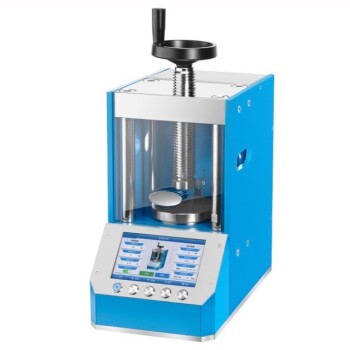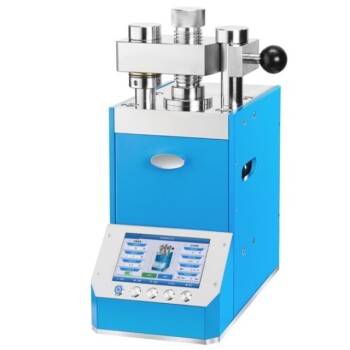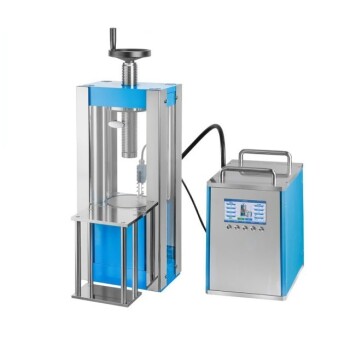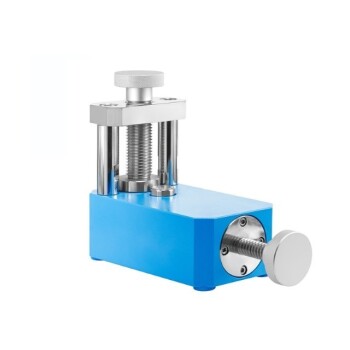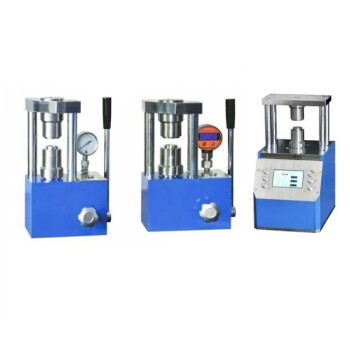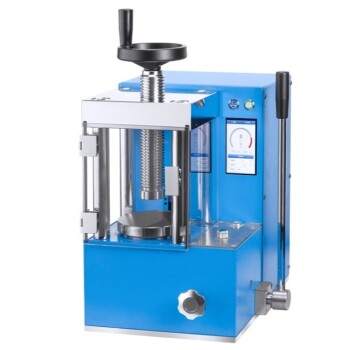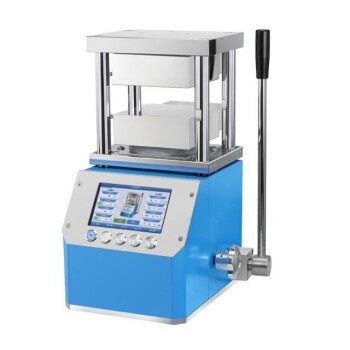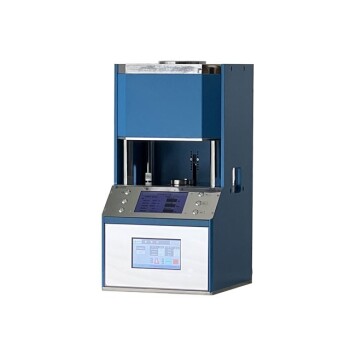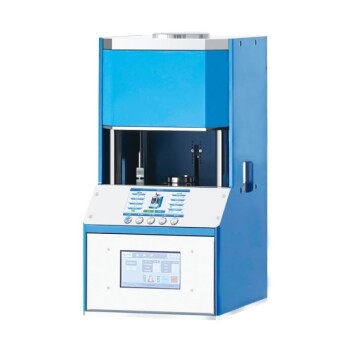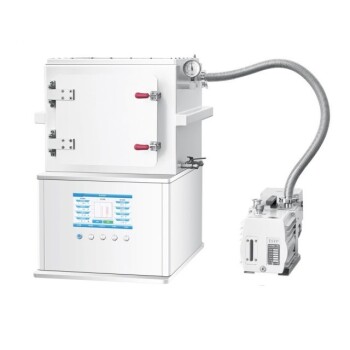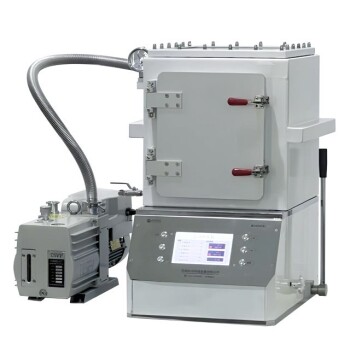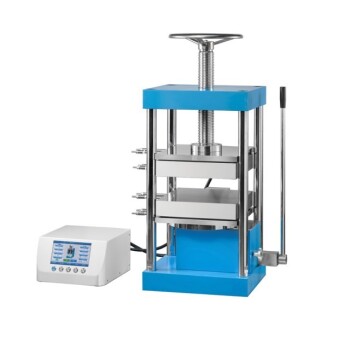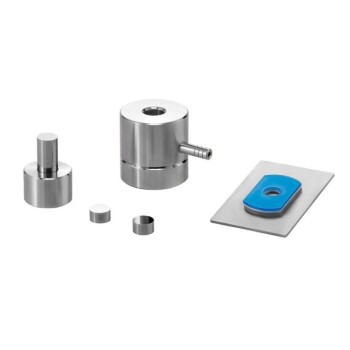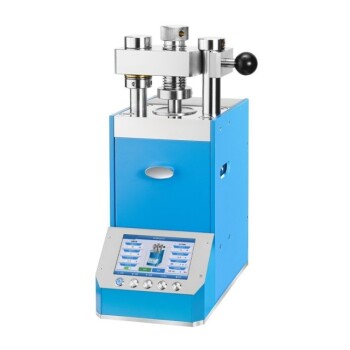In short, XRF pelletising is a critical sample preparation technique used to create a solid, disc-shaped pellet for X-ray fluorescence (XRF) analysis. The process involves grinding a sample into a fine powder, often mixing it with a binding agent, and compressing it under immense pressure to form a stable, homogenous disc suitable for the spectrometer.
The true purpose of pelletising is not simply to create a solid sample, but to eliminate physical inconsistencies. By creating a perfectly flat, dense, and uniform surface, you ensure that the analytical results from the XRF spectrometer are both accurate and reproducible.
Why Sample Preparation is Critical for XRF
To understand why pelletising is so important, you must first understand how both XRF and the physical nature of a sample affect the results.
A Quick Look at How XRF Works
An XRF spectrometer bombards a sample with high-energy X-rays. This causes atoms within the sample to eject electrons, and as other electrons drop to fill the void, they release secondary X-rays—a process called fluorescence.
The energy of this fluorescence is unique to each element, allowing the machine to identify which elements are present. The intensity of the fluorescence indicates how much of each element exists.
The Problem with Raw Samples
The XRF analysis is fundamentally a surface technique; the instrument can only analyze what it can "see." An unprepared sample, such as a loose powder or a raw mineral chunk, presents several problems:
- Particle Size Effects: Large or inconsistent particles can absorb or scatter the fluorescent X-rays before they reach the detector, skewing the results.
- Surface Roughness: An uneven surface means the distance from the X-ray source and detector varies across the sample, leading to inaccurate intensity readings.
- Density Variations: Loose powders have voids and inconsistent density, which affects the signal intensity and leads to non-reproducible results.
The Solution: A Perfect Surface
Pelletising directly solves these issues. Compressing the powder into a dense, solid disc creates a homogenous, flat, and structurally stable sample that can be analyzed reliably and repeatedly.
The Core Steps of XRF Pelletising
The process is straightforward but requires careful attention to detail to ensure high-quality results.
Step 1: Grinding to a Fine Powder
The first step is to reduce the sample to a consistent and fine particle size. This ensures that the individual components of the sample are evenly distributed, which is the foundation of a homogenous pellet.
Step 2: Adding a Binder
A binding agent, typically a cellulose wax, is often mixed with the sample powder in a specific proportion (e.g., 20%-30%). This binder serves two purposes: it acts as a grinding aid and provides the structural integrity needed to form a durable pellet. These binders are made of light elements that are not detected by the XRF.
Step 3: Pressing Under High Pressure
The powder-binder mixture is poured into a die and placed in a hydraulic press. It is then subjected to 15 to 35 tons of pressure. This immense force compacts the particles, eliminates voids, and forms the final, solid pellet.
Understanding the Trade-offs and Key Variables
Success in pelletising depends on controlling several critical variables. Missteps here are the most common source of poor XRF data.
The Role of Binders and Dilution
While a binder is essential for pellet integrity, it also dilutes the sample. For accurate quantitative analysis, this dilution ratio must be kept precisely consistent for every sample and standard. An inconsistent binder-to-sample ratio is a primary source of error.
The Risk of Contamination
Any material introduced during grinding, mixing, or pressing can contaminate the sample and appear in the final analysis. Using clean equipment and high-purity binders is non-negotiable for trace element analysis.
Pressure, Thickness, and Stability
Applying sufficient pressure is key to creating a dense pellet that won't crumble. The thickness of the pellet also matters, as a pellet that is too thin may not fully capture the X-ray signal. For very fragile materials, pressing the sample into a reinforcing aluminum cup provides support and guarantees a perfectly flat analytical surface.
Making the Right Choice for Your Goal
Not all samples require the exact same approach. The method you choose depends on the material and your analytical objectives.
- If your primary focus is ultimate quantitative accuracy: Consistently use a high-purity binder with a precisely measured dilution ratio, and ensure your grinding and pressing parameters are identical for every sample.
- If your primary focus is rapid qualitative screening: The process can be slightly less rigid, but creating a flat pellet will always yield more reliable elemental identification than analyzing loose powder.
- If you are working with fragile or small-volume samples: Pressing the powder directly into an aluminum support cup is the best practice to ensure a stable and perfectly flat surface for analysis.
Mastering sample preparation is the first and most important step toward generating high-quality, trustworthy XRF data.
Summary Table:
| Step | Key Action | Purpose |
|---|---|---|
| 1 | Grinding to Fine Powder | Ensures even distribution and homogeneity |
| 2 | Adding Binder | Provides structural integrity and aids grinding |
| 3 | Pressing Under High Pressure | Forms dense, flat pellet for reliable analysis |
Enhance your lab's XRF accuracy with KINTEK's reliable lab press machines! We specialize in automatic lab presses, isostatic presses, and heated lab presses designed for precise sample preparation. Whether you're conducting quantitative analysis or rapid screening, our equipment ensures consistent, contamination-free results. Contact us today to discuss how we can support your laboratory needs and boost your analytical performance!
Related Products
- Automatic Laboratory Hydraulic Press Lab Pellet Press Machine
- Manual Laboratory Hydraulic Press Lab Pellet Press
- Automatic Laboratory Hydraulic Press for XRF and KBR Pellet Pressing
- Laboratory Hydraulic Split Electric Lab Pellet Press
- Laboratory Hydraulic Press 2T Lab Pellet Press for KBR FTIR
People Also Ask
- What are the key steps for making good KBr pellets? Master Precision for Flawless FTIR Analysis
- What is the purpose of creating pellets for XRF spectroscopy using a hydraulic press? Ensure Accurate and Repeatable Elemental Analysis
- How does a hydraulic press aid in XRF spectroscopy? Achieve Accurate Elemental Analysis with Reliable Sample Prep
- How do hydraulic press machines ensure precision and consistency in pressure application? Achieve Reliable Force Control for Your Lab
- How do hydraulic pellet presses contribute to material testing and research? Unlock Precision in Sample Prep and Simulation
